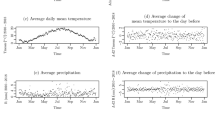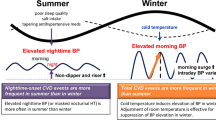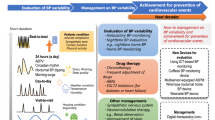Abstract
Objective: Episodic reports suggest that geomagnetic disturbances of solar origin are associated with biological and clinical events, including increased arterial blood pressure (BP). We reassessed this aspect by relating solar activity levels to ambulatory BP measured in our out-patient population.
Patients and methods: The ambulatory BP measurements of 447 consecutive untreated patients attending a hypertension out-patient clinic who did a monitoring for diagnostic purposes over 5 years were retrieved. The mean daytime, night-time and 24-h BP and heart rate values were related to the temporally corresponding geomagnetic index k-sum obtained by the nearest observatory. K-sum is a local measurement of the irregular disturbances of the geomagnetic field caused by solar particle radiation.
Results: Significant to highly significant positive correlations were observed for k-sum with systolic (daytime and 24 h) and diastolic BP (daytime, night-time and 24 h), but not with heart rate. No correlations were found with the k-sum of 1 or 2 days before the monitorings. Multiple correlations which also included other potential confounding factors (date, age) confirmed a significant effect of k-sum on BP. Comparison made in season-matched subgroups of quiet and disturbed days (using three different criteria of definition), always showed significantly higher values in the disturbed days for all BP parameters except systolic night-time pressure. The difference between the quietest and the most disturbed days was of about 6 to 8 mm Hg for 24-h systolic and diastolic BP.
Conclusion: These results are unlikely to be due to unrelated secular trends, but seem to reflect a real relation between magnetic field disturbances and BP.
This is a preview of subscription content, access via your institution
Access options
Subscribe to this journal
Receive 12 digital issues and online access to articles
$119.00 per year
only $9.92 per issue
Buy this article
- Purchase on Springer Link
- Instant access to full article PDF
Prices may be subject to local taxes which are calculated during checkout
Similar content being viewed by others
Author information
Authors and Affiliations
Rights and permissions
About this article
Cite this article
Ghione, S., Mezzasalma, L., Seppia, C. et al. Do geomagnetic disturbances of solar origin affect arterial blood pressure?. J Hum Hypertens 12, 749–754 (1998). https://doi.org/10.1038/sj.jhh.1000708
Received:
Accepted:
Published:
Issue Date:
DOI: https://doi.org/10.1038/sj.jhh.1000708
Keywords
This article is cited by
-
Systemic lupus Erythematosus and geomagnetic disturbances: a time series analysis
Environmental Health (2021)
-
A simulated geomagnetic storm unsynchronizes with diurnal geomagnetic variation affecting calpain activity in roach and great pond snail
International Journal of Biometeorology (2019)
-
Long-Term Study of Heart Rate Variability Responses to Changes in the Solar and Geomagnetic Environment
Scientific Reports (2018)
-
Influence of geomagnetic activity and atmospheric pressure in hypertensive adults
International Journal of Biometeorology (2017)
-
A possible association between space weather conditions and the risk of acute coronary syndrome in patients with diabetes and the metabolic syndrome
International Journal of Biometeorology (2017)



